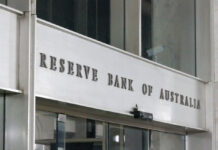The US dollar is mixed against major pairs on Tuesday. The greenback came under pressure on the first day after a long weekend with the release of the ISM manufacturing PMI had a surprise contraction in August. Weakness in manufacturing coincided with the new US and China tariffs came in effect in the ongoing trade war between the two nations.
The dollar was higher ahead of the economic indicator release, but the fact that the ISM index of factory activity went into contraction territory triggered a flight to safety for investors. The below 50 reading from the index is proof of the negative effect the trade dispute is having on America’s manufacturing.
This week will be full of major economic releases with the follow up to the ISM services and the U.S. non-farm payrolls (NFP) report due on Friday.
USD/CAD Canadian Dollar Lower Ahead of Central Bank
The Canadian dollar was trading at 1.3331 on Tuesday ahead of the rate decision by the Bank of Canada (BoC) on Wednesday at 10:00 am EDT. The market is divided on what Governor Poloz will decide for the Canadian benchmark interest rate. A rate cut is in the cards this year, following the lead by the U.S. Federal Reserve to lower rates but it could come later in 2019. The BoC has more room to maneuver and so far, this year can afford to be patient, but as recession fears rise and the prolonged trade war between the US and China continues to have a negative effect on global growth the central bank could lose that buffer.
The economy of the United Starts has been mixed and is still moving forward despite losing some of its momentum to the trade war with China. Recession fears might have been overblown four weeks ago, but as the dispute drags on with no end in sight there is more evidence of the impact it is having on both sides. If the bank does cut, 25 basis points is the likely option leaving the benchmark rate at 1.50 percent and putting downward pressure on the loonie as the rate differential with the Fed funds rate is reduced.
The U.S. Federal Reserve hiked the benchmark rate four times in 2018 but has now gone a full 180 degrees and cut rates in July. The White House keeps pressuring for even lower rates, but the central bank has been neutral on its statements. There could be two rate cuts this year, but they could be linked to reaching a trade deal with China or not.
The market has now priced in two rate cuts this year, but the central bank could not oblige making the US dollar rise given the interest rate differential it holds against other major economies such as Europe and Japan.
The Fed is caught between a rock and a hard place as the White House and the market are pushing for lower rates, but economic fundamentals do not validate a decisive rate move at this stage. Central banks have an issue with being proactive and are especially bad at offsetting the effects of trade disputes with monetary policy.
The US is not near a recession but could fall into one if consumer confidence starts deteriorating. Economic indicators still show a healthy economy, and especially if compared to other major economies such as Germany and Japan.
Gold has been the preferred safe haven in times of uncertainty and with the ongoing trade war as well as Brexit, European politics and the situation in Argentina, the yellow metal is near the $1,550 price level.
















